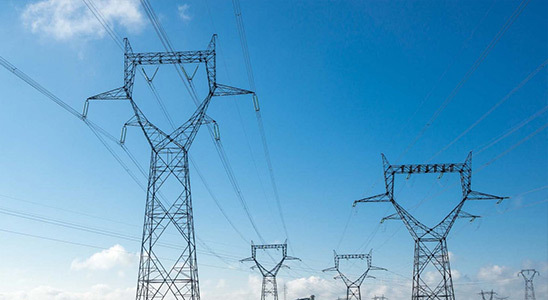Installation requirements and operation and maintenance precautions for distribution transformers
When installing transformer equipment in distribution devices, the following standard requirements must be met: 1. When installing the oil pipes, they must be installed according to the requirements of the drawings. Bolts are used for reinforcement, which is completed before installing the radiator. Please pay attention to the oil pump port of the radiator before installation.
1. When installing transformer equipment in distribution equipment, the following standard requirements must be met:
1. When installing the oil pipe, it must be done according to the requirements of the drawings. Bolts are used for reinforcement, which is completed before installing the radiator. Please pay attention to the oil pump port of the radiator before installation.
2. When installing the radiator, it is required that the transformer box is not easily opened to avoid damaging the oil tank, as air pressure is affected by tides. Installation should be carried out according to the graphic elements and related operating sequence indicated in the construction drawings. Before conducting installation checks, please carefully check if the seal is good. Before installing the radiator, you need to do some basic work, such as installing the radiator base.
3. After the transformer installation is completed, a trial operation and a comprehensive inspection are required. To ensure the normal operation of the transformer after installation, it is necessary to strengthen the technical disclosure before construction based on quality assessment content. Especially when inspecting the transformer, professional technicians must check each part of the transformer installation one by one. During the inspection, perform operational tests of the trial run. If there is oil leakage due to poor sealing during or after installation, the sealing performance must be checked in a timely manner.
2. Fault issues of distribution transformers during operation
(1) Noise from distribution transformers. Distribution transformers will produce some noise during operation. However, under normal circumstances, this noise is relatively mild, with a certain range of decibel fluctuations. However, during periods of equipment failure, the transformer may produce chaotic, loud, sharp, or even explosive-like sounds. If this sound occurs and is not dealt with in a timely manner, the transformer is likely to experience failure due to overload, affecting the basic power supply capacity of the enterprise. Additionally, if the accessories and screws of the transformer become loose, noise will also occur. If the transformer accessories do not remain in their normal installation positions and collide with other parts during operation, noticeable friction sounds will occur. If bubbles and liquid overflow boiling phenomena occur during operation, it is likely due to inter-turn short circuits leading to poor contact of the switch or poor contact of the electrical lines inside the voltage transformer.
(2) Temperature of distribution transformers. In general, power machinery and equipment, including distribution transformers, in Chinese power enterprises operate 24 hours a day. Staff work in shifts to promote the efficiency of power enterprises as much as possible. This mode is also an important factor affecting the service life of transformers. This state represents an overload operating condition for the distribution transformer itself, and due to environmental issues, if timely heat dissipation is not performed, the temperature in the equipment will rise, and the overall temperature of the transformer will also increase. When a certain temperature is reached, the transformer may experience short circuits, and in severe cases, it may lead to the transformer burning out, making normal operation impossible.
(3) Oil volume in distribution transformers. During operation, distribution transformers are prone to oil seepage or leakage. Once seepage occurs, the oil volume inside the transformer will decrease, and the air and water vapor that enter will cause chemical changes in the oil, making it viscous and impure. This phenomenon directly affects the heat dissipation of the transformer, and over time, it will lead to transformer failure issues. Oil color. By observing the oil color in the transformer during operation, it may appear white, red, or dark brown. Typically, when the oil is scorched by an electric arc, it will appear dark brown, containing many impurities, and the insulation of the oil will decrease. Larger particles of debris can also significantly affect the oil supply situation during operation. After the insulation materials in the transformer age, they may break down and cause short circuits, leading to the oil color changing to red. Additionally, the oil color turning white is also due to the influence of water vapor and air.
3. Common fault handling methods for distribution transformers (1) Load handling of distribution transformers. The power load of power enterprises in China is relatively large, and the phenomenon of three-phase load imbalance often occurs. This leads to significant losses for distribution transformers and reduces their effective capacity. To address this issue, enterprises should first conduct a detailed investigation of the load situation of the distribution transformers. Record and understand the load of the transformers under different seasonal conditions and at different times of the day. By adjusting the three-phase load, the operation of the transformers can conform to the basic industry standards, striving for symmetrical operation. For the transformer capacity, adjustments can be made by controlling the peak and valley times of electricity to manage the load issues of the transformers. (2) Temperature regulation of distribution transformers. Abnormal temperatures in distribution transformers are usually closely related to the transformer oil. For handling issues related to the oil volume and color of the transformer oil, first, check for leakage in the transformer and identify the specific leakage locations. Tighten the problematic components to eliminate friction issues between parts. Additionally, if the oil inside the transformer has deteriorated, it should be replaced in a timely manner if the situation is severe. If the oil begins to deteriorate in the early stages, purification and cleaning prevention are also protective measures for the transformer oil. When replacing oil, be careful to add new transformer oil according to the marked scale position. (3) Voltage configuration of distribution transformers. After a distribution transformer is struck by lightning, the electrical organization of the transformer should be measured first. Identify the reasons for the increased resistance of the transformer and reconnect according to the equipment requirements of the distribution transformer. Generally, power enterprises are required to install lightning protection devices when using distribution transformers. When modifying the transformer, connect the lightning protection device, the transformer shell, and the neutral point of the low-voltage side to ensure that the grounding resistance of the transformer is minimal.
4. Management and maintenance methods for distribution transformers.
(1) Monitoring and Management of Distribution Transformer: Regular inspections of the transformer oil for leakage and seepage are essential to reduce current leakage during operation and prevent the deterioration of remaining transformer oil due to leakage. The cleanliness of the transformer should be maintained, checking the sealing effectiveness of the oil drain valve, cover sleeve, and oil level gauge. Additionally, the oil level should be checked against the required marked scale, and timely additions should be made if the oil quantity decreases after use. It is also important to monitor the color of the transformer oil to avoid widespread deterioration that would necessitate oil replacement. Inspect the condition of the insulating materials, replacing any aged materials to control potential transformer failures. Monitoring the balance of three-phase load parameters is a necessary monitoring item during the operation of the transformer. Attention should also be paid to the load conditions of the transformer equipment, specifically checking for overload conditions. By strengthening the monitoring of three-phase load parameters and reasonably distributing electricity usage time and current, the normal and stable operation of the transformer can be ensured. Equipment Noise: Staff and technical maintenance personnel should regularly monitor the noise of the transformer during operation to ensure its normal functioning. In the event of abnormal noises, the operation of the equipment should be stopped, and the transformer should be inspected and analyzed to identify the cause of the incident, taking appropriate corrective measures.
(2) Daily Maintenance and Repair of Distribution Transformers: The relays in distribution transformers are usually of the baffle type. The inspection of this type of relay can start from the flexibility of the upper and lower oil levels, ensuring that the insulation of the terminals and terminal boards is well controlled. When reinstalling the equipment, attention should be paid to cutting off the power and following regulations to ensure that the oil tank points to the oil storage cabinet. During the maintenance process, in addition to ensuring the cleanliness of the equipment, attention should also be paid to cleaning the oil sludge on the windings, and the insulation materials should be repaired or replaced as needed. The technical level of staff in maintenance and repair is also a factor affecting the normal operation of distribution transformers. Companies should strengthen training and management of staff to improve their ability to handle fault issues.
More news







